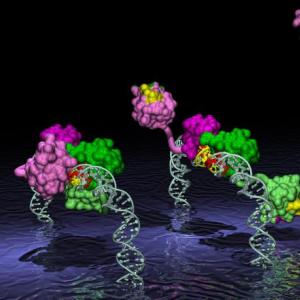Presentation on the topic of overcoming the backwardness of developing countries. The problem of overcoming the backwardness of developing countries
1 slide
Relationship global problems. Overcoming backwardness developing countries– the largest global problem. Completed by: Daria Shapovalova.

2 slide
What are global problems? One of the definitions refers to global as “problems that arise as a result of the objective development of society, create threats to all of humanity and require the united efforts of the entire world community to be solved”1.

3 slide
The correctness of this definition depends on which problems are classified as global. If this is a narrow circle of higher, planetary problems, then it is entirely true. If we add here problems such as natural disasters (it is global only in the sense of the possibility of manifestation in the region), then this definition turns out to be narrow and limiting, which is its meaning.

4 slide
Interrelation of global problems As you have seen, each of humanity’s global problems has its own specific content. But they are all closely interconnected: energy and raw materials with environmental, environmental with demographic, demographic with food, etc.

5 slide
The problem of preventing a new world war directly affects all other problems. However, now that the transition from an armaments economy to a disarmament economy has begun, the center of gravity of most global problems is increasingly moving to the countries of the developing world.

6 slide
The scale of their backwardness is truly enormous. The main manifestation and at the same time the cause of this backwardness is poverty. In the countries of Asia, Africa and Latin America, 40% of the population lives in absolute poverty. Residents of urban slums and rural hinterlands are forced to settle for a standard of living that is 5-10% of the standard of living in the richest countries. And in general, the gap in living standards between the North and the South is approximately 20:1.

7 slide
Perhaps the food problem has become most dramatic, even catastrophic, in developing countries. Of course, hunger and malnutrition have existed in the world since the very beginnings of human development. Already in the 19-20 centuries. famines in China, India, Ireland, many African countries and the Soviet Union claimed many millions of lives. But the existence of famine in the era of scientific and technological revolution and overproduction of food in economically developed Western countries is truly one of the paradoxes of our time.

“Modern global problems of humanity” - The nature of the greenhouse effect. Ways to solve the food problem. Humanity has already entered a transition period. Terrorist attacks. Demographic situation. Global problems of our time. Geography of famine. Raising the World level. Human activity. The North-South problem. Limited reserves of organic and mineral resources.
“Solving global problems of our time” - State of the living and inanimate nature. Distribution to the entire population of the Earth. Average concentration of gases. The problem of war and peace. Role in solving global problems. Disarmament issues. CO2 concentration. Atlantic coast of the United States. Globalization. A collection of the world's most pressing problems.
“Global problems and prospects for humanity” - Food problem. Global problems of humanity. The meaning of our lesson. Ways to dispose of waste in cities. Environmental problem. What can each of us do to solve the problem of household waste? Demographic problem. Expert opinion. Environmental pollution. Degradation of “mass culture”.
“Global problems of human development” - Generalization. Environmental problem. Energy and raw materials problem. Pollution of the world's oceans. Global problems of humanity. Main features of global problems. Regional conflicts and the problem of terrorism. The problem of peace and disarmament. The most important global problems of our time. Destruction of forests.
“Food problem in the world” - The modern world food situation is tragic because of its inconsistency. The hand of a hungry boy in the palm of a European. The global nature of the problem is also manifested from another side. For example, even in the myths of the Indians of Central America, the deity of hunger is mentioned. The most pressing issues at present are those related to protein-calorie malnutrition.
“Classification of global problems” - Energy problem. Epigraph. The concept of "global problems". Demographic problem. Global problems. Ways to resolve global problems. Nuclear threat. Peculiarities. Classification of global problems. Global problems of humanity. Demography records the decline of the indigenous population in developed countries.
There are a total of 34 presentations in the topic
Problems of overcoming backwardness (poverty and hunger) developing countries
Plan:
Introduction
1.Classification and essence of global problems
2. The diversity of the concept of poverty and its causes
3. Definition of hunger and its nature
4. The problem of overcomingbackwardness (poverty and hunger)
5. Ways to overcome poverty and hunger
6. The interdependent nature of solving global problems
Conclusions
Download:
Preview:
To use presentation previews, create a Google account and log in to it: https://accounts.google.com
Slide captions:
Problems of overcoming the backwardness of developing countries The work was completed by: Regional Nikita Pytalovo - 2013 - STATE BUDGETARY EDUCATIONAL INSTITUTION OF THE PSKOV REGION “PYTALOVSKAYA SPECIAL (CORRECTIONAL) COMMON EDUCATIONAL BOARDING SCHOOL OF I AND II TYPES”
Man, being the bearer of reason, becomes a participant in the development of the world and influences development, and the pace of this influence is such that it can create problems common to all humanity.
States of Asia States of Africa States of Latin America and Oceania Many scientists believe that the problems of the “third world” countries contain an explosive potential that is not inferior in power to nuclear power. “THIRD WORLD” – WHAT IS IT?
1. lack of access in a world of abundant opportunities; 2. lack of justice and equality; 3. lack of human security and peace; 4. lack of political freedom for the poor; 5. lack of health care system 6. inability of the poor to participate in the decision-making process; 7. unemployment 8. lack of good governance; 9.lack of personal security, etc. The main causes of poverty:
“Man eats to live, but does not live to eat.” The main cause of famine lies not in natural disasters, but in the economic backwardness of developing countries and the neocolonial policies of the West. The lack of necessary infrastructure in developing countries complicates the timely delivery of food to areas affected by famine.
Due to diseases associated with malnutrition and hunger, lack of clean water, 40 million die annually in developing countries, including 18 million children.
Ways to solve problems: 1. Stopping wars, introducing a constitution, having a standing army. 2. Economic recovery, by establishing and expanding enterprises, importing and exporting with other countries, investing in the country from abroad, establishing relations with neighboring highly developed countries 3. Improving medicine, exchanging experience with highly developed countries, purchasing equipment and building hospitals 4. Construction educational institutions, establishing book printing, widespread use of Internet resources 5. Improving the environment, stopping pollution of water bodies and rivers 6. Breeding livestock, establishing agriculture, importing and exporting with developed countries
Modern political research shows that there is also a direct connection between economic backwardness and human rights. The poorer the society, the less attention it pays to human rights, which includes the human right to education, social insurance, improvement of working conditions and quality of life, and others.
Hunger and poverty like social problem, it is almost impossible to completely eliminate it from everyday economic life, but it is quite possible to reduce its load on the entire system as a whole and the scale of its influence with the help of social programs and international assistance to developing countries.
List of sources used 1. Shirokov G. “The Third World” - a development strategy // Asia and Africa today. - 1992. - No. 3. 2. Protasov O.G. Global problems of humanity // Ecology and Economics, No. 11, 2010. 3. Problems of overcoming economic backwardness and technological dependence of developing countries: a collection of scientific works. Proceedings / MGIMO Ministry of Foreign Affairs of the USSR; edited by L.A. Fituni - M., 1985. 4. [Electronic resource] http://articles.excelion.ru/ Article “Global economic problems: essence, types, dynamics" 5. [Electronic resource] http://www.e-college.ru/ Educational and methodological complex 6. [Electronic resource] http://ru.wikipedia.org/ 7. [Electronic resource] http://www.voronova-on.ru/ 8. [Electronic resource] http://www.personalmoney.ru/ 9. Rodionova, I.A. Global problems of humanity / I.A. Rodionova - M.: Aspect Press, 1995. 10. Universal Declaration of Human Rights: Adopted by the UN General Assembly on December 10, 1948 - Paris. 11. Exsolver Library: portal [electronic resource]
Thank you for your attention!
Slide 1
The problem of overcoming the backwardness of developing countries.
The work was carried out by: Ilya Varbansky, O. Mamedov. Teacher Shizhenskaya N.N. GBOU school No. 104 of St. Petersburg

Slide 2
Problems of the developing world:
1. Frequent wars 2. Poverty 3. Famine
5. Low level education
4. Poorly developed medicine

Slide 3
Wars in developing countries
During the post-colonial period, 35 armed conflicts were recorded in Africa, during which about 10 million people died, most of whom (92%) were civilians. Africa accounts for almost 50% of the world's refugees (more than 7 million people) and 60% of displaced people (20 million people).

Slide 4
Poverty in underdeveloped countries
In the years since the Rio de Janeiro Conference (1992), the number of people living in absolute poverty has increased, particularly in developing countries. The very serious and complex problem of poverty can cause social tensions, undermine economic development, damage environment and pose a threat to political stability in many countries.

Slide 5
The 2011 East African famine is a humanitarian disaster that, according to international organizations threatens about 11.5 million people, primarily in Somalia (3.7 million), Ethiopia (4.8 million), Kenya (2.9 million) and Djibouti (164 thousand).

Slide 6
Healthcare
In third world countries, medicine is poorly developed. Because of this, a huge number of people die every year.

Slide 7
Low level of education
Currently, in terms of education, underdeveloped countries still lag behind other parts of the world. In 2000, only 58% of children in sub-Saharan Africa were in school; these are the lowest figures in the world. There are 40 million children in Africa, half of whom school age who don't receive school education. Two thirds of them are girls.

Slide 8
Ways to solve problems:
1. Stopping wars, introducing a constitution, having a standing army
2. Economic recovery, through establishing and expanding enterprises, importing and exporting with other countries, investing in the country from abroad, establishing relations with neighboring countries and highly developed
3. Improving medicine, exchanging experience with highly developed countries, purchasing equipment and building hospitals

Slide 9
4. Construction of educational institutions, establishment of book printing, widespread use of Internet resources
5. Improving the environment, stopping pollution of water bodies and rivers
6. Breeding livestock, establishing agriculture, importing and exporting with developed countries
Global problem The most important problem of the world economy at the beginning of the 21st century. overcoming poverty and backwardness. IN modern world Poverty and backwardness are characteristic primarily of developing countries, where almost 2/3 of the world's population lives. Therefore, this global problem is often called the problem of overcoming the backwardness of developing countries. The most important problem of the world economy at the beginning of the 21st century. overcoming poverty and backwardness. In the modern world, poverty and backwardness are characteristic primarily of developing countries, where almost 2/3 of the world's population lives. Therefore, this global problem is often called the problem of overcoming the backwardness of developing countries.

Characteristics developing countries Developing countries, countries characterized by: - lack of means of production; - backward technology; - low level of literacy; - high level unemployment; - rapid population growth; - labor force employment is predominantly in agriculture

Economic situation 75% of the world's population lives in Third World countries - 3.2 billion people. Low level of labor productivity. High and growing unemployment rate. Heavy dependence on agricultural production and export of fuel and raw materials. Subordinate position, vulnerability in the system of international economic relations.

Reasons that hinder overcoming backwardness Complete dependence on the world market and its conditions The need to master new technologies, develop industry and the service sector requires participation in world trade. Use of traditional energy sources Development of productive forces and socio-cultural environment of society is impossible without increasing the level of education of the entire people of Agrarian countries. They account for over 90% of the world's rural population


Most economists agree that the development of effective national development strategies based on internal development in developing countries is of decisive importance in solving the problem of poverty and backwardness. economic resources based on an integrated approach. Most economists agree that the development of effective national development strategies in developing countries, based on domestic economic resources based on an integrated approach, is of decisive importance in solving the problem of poverty and underdevelopment.

First of all, these countries themselves can improve their position by solving such key tasks as: These countries themselves can improve their situation, first of all, by solving such key tasks as: - Carrying out production incentives socio-economic transformations, agrarian and market reforms; - Carrying out production-stimulating socio-economic transformations, agrarian and market reforms; - Ensuring capital accumulation, industrialization of the economy and growth of the capital-labor ratio; - Ensuring capital accumulation, industrialization of the economy and growth of the capital-labor ratio; - Implementation of an economy regime, reasonable state policy in managing the national economy, population dynamics and others social processes. - Implementation of the economy regime, reasonable state policy in managing the national economy, population dynamics and other social processes.

In addition, many developing countries cannot completely change their situation without international assistance in solving the problem of underdevelopment. It is carried out primarily through the so-called official development assistance from developed countries in the form of providing financial resources.

Thus, today the problem of overcoming the backwardness of developing countries is very acute for the world community; many ways to overcome it are being developed and introduced into economic practice, but in order for all goals to be resolved it will take a lot of time. Thus, today the problem of overcoming the backwardness of developing countries is very acute for the world community; many ways to overcome it are being developed and introduced into economic practice, but in order for all goals to be resolved it will take a lot of time.








